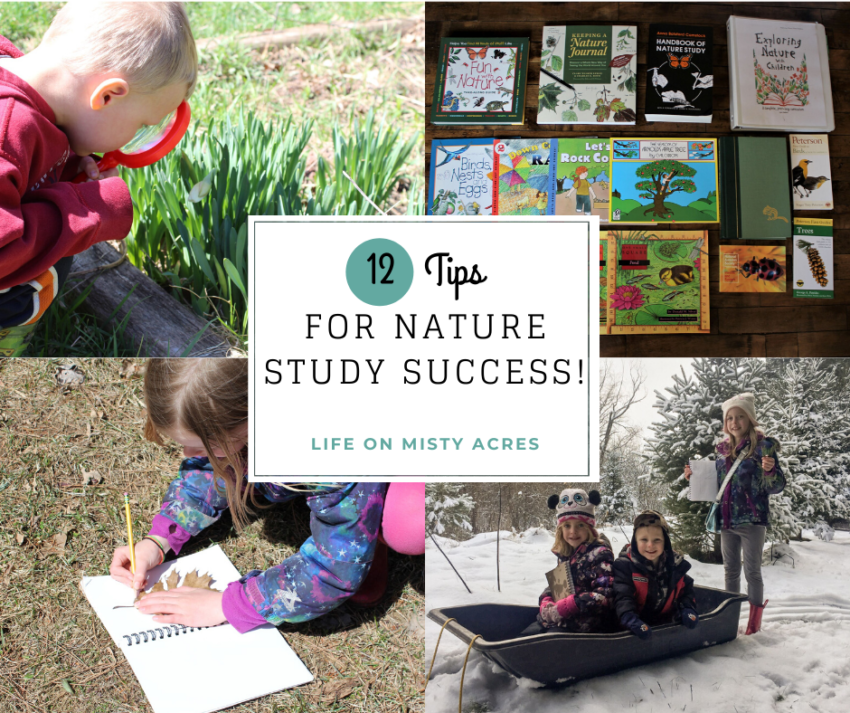
12 Tips for Nature Study Success!
{This post may contain affiliate links. You can read our Disclosure Policy HERE.}
12 Tips for Nature Study Success!
You’ve seen those beautiful pictures of a family outside studying nature. Their nature notebooks in hand, drawing the most amazing picture of a butterfly that just happened to land on a plant right next to them, That picture was so inspiring that you had to go out and try it for yourself. You gather up the kids and all of your supplies and confidently, head outdoors to find those wild butterflies. Yet, the scene that you have imaged in your head quickly turns into chaos. Your butterfly plan instead turns into one kid chasing frogs, the other collecting sticks, and one just eating the dirt. You wonder, how the heck did those people pull it off? You become discouraged claiming that nature study isn’t for you. I am with you! I have been there!
Through trial and error, I have learned some valuable lessons in my last few years of studying nature with my kids. I am not an expert on biology, but I truly believe that the study of nature is something that kids should learn to know and love. It teaches you so much by simply observing. Keep reading to find a few tricks that I have learned throughout my seven years of homeschooling.
Are you looking for ways to make nature study stress-free and fun? Here are my 12 Tips to Nature Study Success! Number 9 was a game-changer for me!
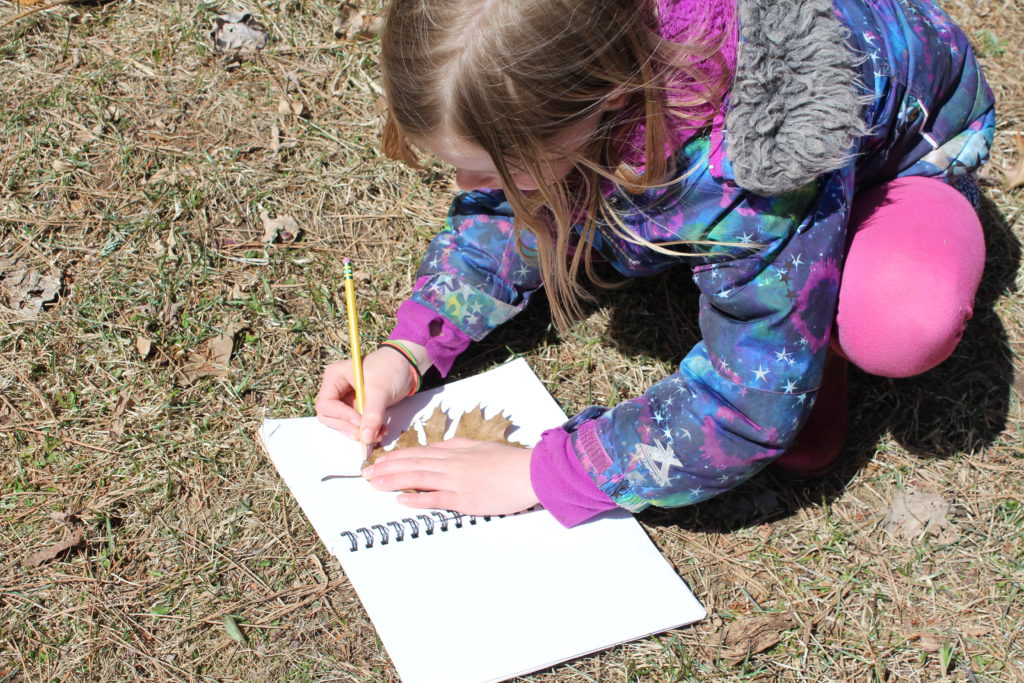
1) Nature Notebook for all
If you are going outdoors to study nature, it is a good idea that everyone has a notebook of some sort to draw their findings, if they so desire. Big kids, little kids, and the parent. I remember stapling 4 sheets of paper together when my kids were young and giving them a few crayons. This made them feel special! And I was not upset when they lost them. Add a colored cover sheet to jazz it up for them.
I also mentioned that the parent should also have one. This is extremely hard to do with small children! If you have little ones that require you to carry them and watch them 24/7, DO NOT think that you have to have your own nature notebook with your kids. It’s really hard to sit down and draw! I do believe it is worth it for the children to see the parent participating, but do not stress yourself out if you have a little one. More likely than not, you are going to be busy chasing and helping others.
All of my kids are getting older now (11, 10, 6, 4) and I feel like now is the time to possibly invest in some small nature study books. I found some blank notebooks at our local grocery store on clearance. I picked up two extra because I knew someone would lose one. Sure enough, my 6-year-old left hers by a tree and it rained. You should have seen the sad mess that laid next to the tree, which we found weeks later. I didn’t know colored pencils can expand so much after being rained on. No worries. I had a backup.
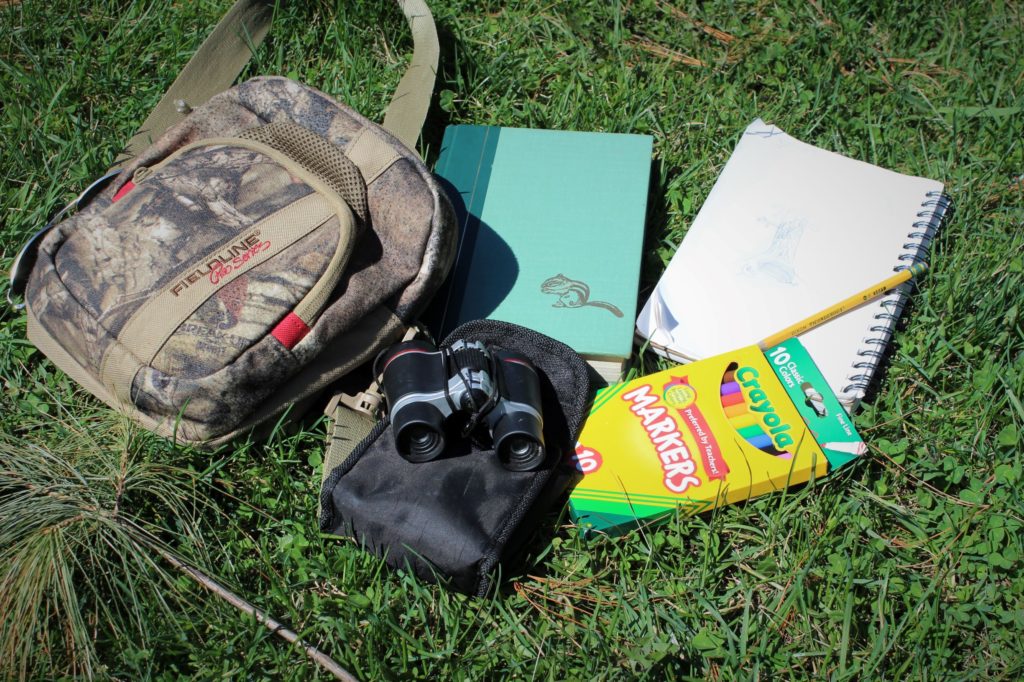
The ones we are currently using are U Create Sketch Diary 70 sheets- 9.5-inch x 6 inches. I thought they were a perfect size for small hands and fitting into little bags! I just happened to find these for a steal at our local grocery store during the back to school time. These Pacon Sketchbooks would be another great option.
We have also purchased Simply Charlotte Mason’s Journaling a Year in Nature. This is a high quality, hardcover, nature study book with prompts for your child to do all year round. If you are looking for something to gently guide your child, this may be for you. It is a more expensive resource, so I would make sure that your children are responsible enough to keep track of these treasured little keepsakes. Mine are still hidden in my homeschooling cabinet for when my children are a little older.
2) It’s all in the Bag
If you are planning to study nature you will want to have some resources to help make your nature outing the best it can be. Are you studying birds? If so, it is helpful to have some binoculars. If you are studying bugs then you may want to pick up a few magnifying glasses or specimen containers for the creatures you find. Are you studying the fall leaves? You may want to have a book that helps you determine what tree that leaf came from and some collection bags to take those goodies home observe later. Don’t have a leaf identification book? Check out your local library.
One thing is for sure, you will want to have these things on hand before the outing. Put them in your bag right away so that you are not frustrated when your nature exploration happens.
Note: You do not need all of these things but if there is something that you know you or your children are interested in, make sure you plan ahead and have that resource available.

Here are a few of our favorite nature study items:
Books
My ALL-TIME Favorite Nature Study Book: Reader’s Digest North American Wildlife
Peterson First Guides: These guides are great for young learners. You can find them for Birds, Insects, Trees, Wildflowers, Mammals, Reptiles and Amphibians, Rocks and Minerals, and more. If your children are older, Peterson also has Field Guides. I personally like the small size of these books. Easy to fit into any sized bag.
Fun with Nature Take Along Guides: These books are more visual and included a few extension activities. An easier read that focuses on the most common types of animals and their surroundings. We have Birds, Nest, and Eggs.
Let’s Read and Find Out Science Books: I love these books! They come in different levels but are so good no matter what age. They are simple, have great pictures, and are very educational, Great for young ones! We have enjoyed From Tadpole to Frog, How a Seed Grows, Down Comes the Rain, Let’s go Rock Collecting, and What Lives in a Shell. They have so many other topics! You can also find a lot of these at the library.
One Small Square Series: This is a neat little series showing your child all the creatures that could live in one small square. They have separate books for all kinds of habitats including Backyard, Pond, Woods, Seashore, Arctic, et. Lots of information is packed into each book.
Handbook of Nature Study– This is the Bible of Nature Study! It is 859 pages and has everything nature! It was originally written in 1911 for Elementary School Teachers. The topics are still relevant today. It goes over nature study, animals, plants, and Earth and sky.
Equipment:
Collection Bag
Tweezers
Gloves if you don’t want to get your hands dirty
Measuring tape
Camera
Don’t forget to bring sunscreen, bug spray, SNACKS, packed lunch, water, sunglasses, extra set of clothes, etc. Think of any blunders that may happen and bring it along. Remember, this is stress-free!
When the big nature day comes- throw your resources in that bag and go.
Let your kiddos pack their bag too! This not only helps you mom but also makes it extra special for your kids. They have their own bag!

3)Pick a Theme
I love having a theme! It’s my favorite way to learn things. What are you studying at the moment? Can you tie that into the outdoors? What is the weather like by you? What season is it? Are there any interesting things happening with animals/weather at the moment? What is your child interested in? What are YOU interested in learning about? What parks/wildlife refuges/outdoor recreation are in your area? Think of those things and then pick something to study. Go to the library and pick out some books on this beforehand.
If you are not sure where to start or would like some guidance, Exploring Nature with Children is a great book that gives you a whole year of Nature Study ideas! It includes weekly themes, a booklist, art study, poetry, and extension activities. You can basically open and go with this book. It doesn’t matter if you have missed the previous weeks. We have enjoyed using it this year and plan to continue with it next year.
Our Journey Westward is another great place to look. Cindy is a wealth of knowledge! Here is her Ultimate Guide to Nature Study. She shares a bunch of resources including free ones. Her NaturExplorers books are a great way to learn about specific themes. Creative Nature Walks have been a favorite here at our home (great for little kids!). She also does some free workshops throughout the year. If you like her stuff, make sure you subscribe to her e-mail list and follow her on Facebook to know when you can sign up for the free video workshops she does on occasion.
Of course, Pinterest is your friend! You can find TONS of free resources out there too.
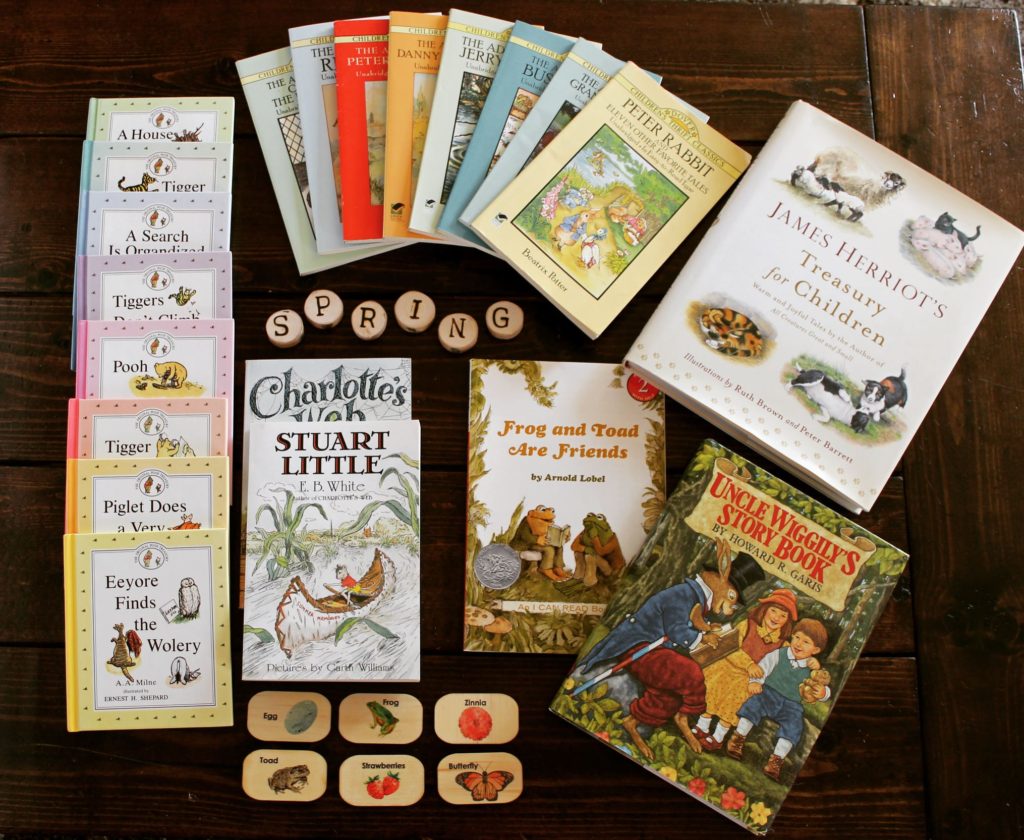
4) Spark that Curiosity
I am a firm believer that there is no greater way to spark interest than to read good fiction and factual books on that topic to make it fun before you head out. Reading books, looking at pictures, recreating stories about those creatures or places will help build up the excitement. Here are a few books that our family has enjoyed reading. I know I am missing SO many wonderful books! Please comment with your favorites that I missed.
A Tree is Nice
Diary of a Worm
We’re Going on a Bear Hunt
Uncle Wiggly’s Story Book
Eric Carle Books
Frog and Toad Books– Also my favorite early reader series
Holling Clancy Holling Books (We enjoyed Paddle to the Sea).
James Herriot’s Treasury for Children
The Lighthouse Family Book Series by Cynthia Rylant
The Tale of Peter Rabbit by Beatrix Potter
Thorton Burgees Books
E B White Books– Charlotte’s Web, The Trumpet of the Swan, Stuart Little.
Winnie the Pooh Books– The House on Pooh Corner is one of our favorites
Owl Babies
5) Dress for Success (and Fun and Messes)
A successful nature time always starts with comfortable clothing. Wear the right shoes for the job. Dress for the weather. Wear a hat if it is sunny. Don’t forget sunglasses. Is there rain in the forecast? Bring a raincoat and rain boots. Snowy? Dress in full winter getup.
Are you reading a book and it includes something of your theme? Pretend to be that character and act out the story. Dress up! Have fun! Make it an adventure, not just a boring study.
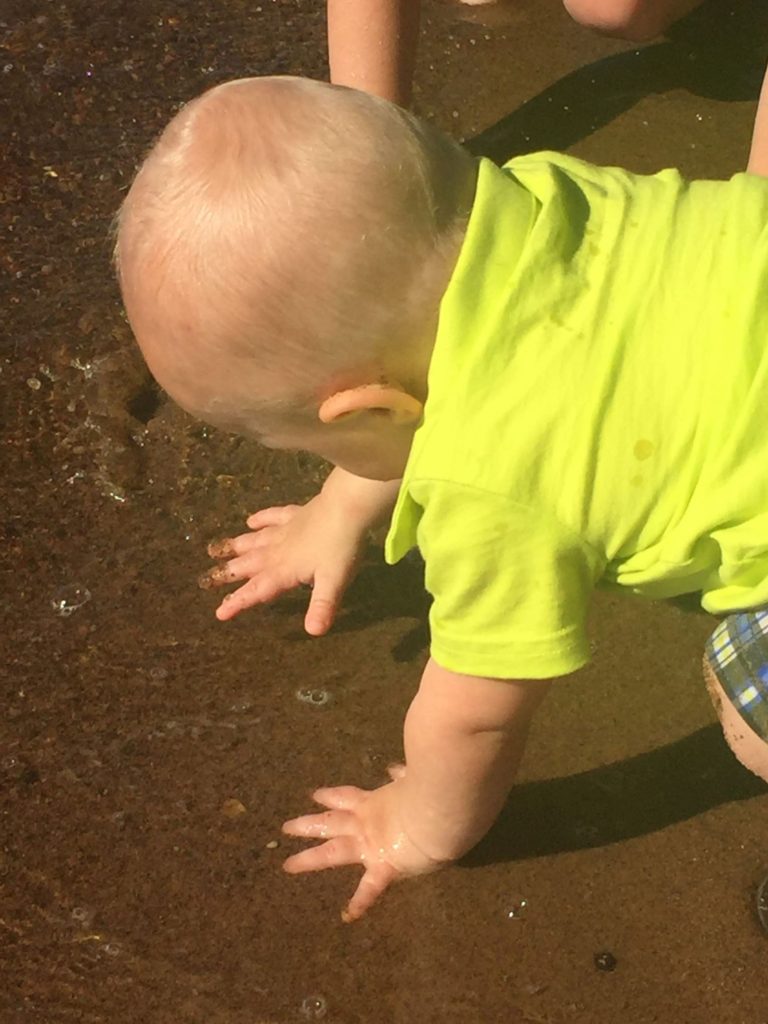
6) Nature Study is for ALL Ages
EVERYONE can benefit from getting outside, breathing in some fresh air, and working those muscles. But, did you know that getting outside and exploring nature can do so much more than that? According to Greater Good Magazine, being outside in nature can help relieve stress, restore concentration, increase engagement, and promote creativity. All good reasons to take a break from the books and get outside sometimes.
I also believe that it is especially important to young children. Being outdoors is a great sensory experience! All the smells, sounds, and textures to touch and taste. It is like a sensory overload. Although again, it can be hard to take small children outside with you, it is very beneficial to their growth and development.

7) Find your Special Spot
The beautiful thing about nature study is that it can be done anywhere! It can be done in your backyard or a local park. It can happen in a public forest or a National Park.
You can choose to go anywhere for your nature study, but it is a good idea to pick a place that is easy to return to. This place can be your special spot that you can return to several times a year to observe the seasonal changes. Your children can find a tree to claim as their own and draw it throughout the different seasons. This can make it very personal for your children to return to the same spot over time.
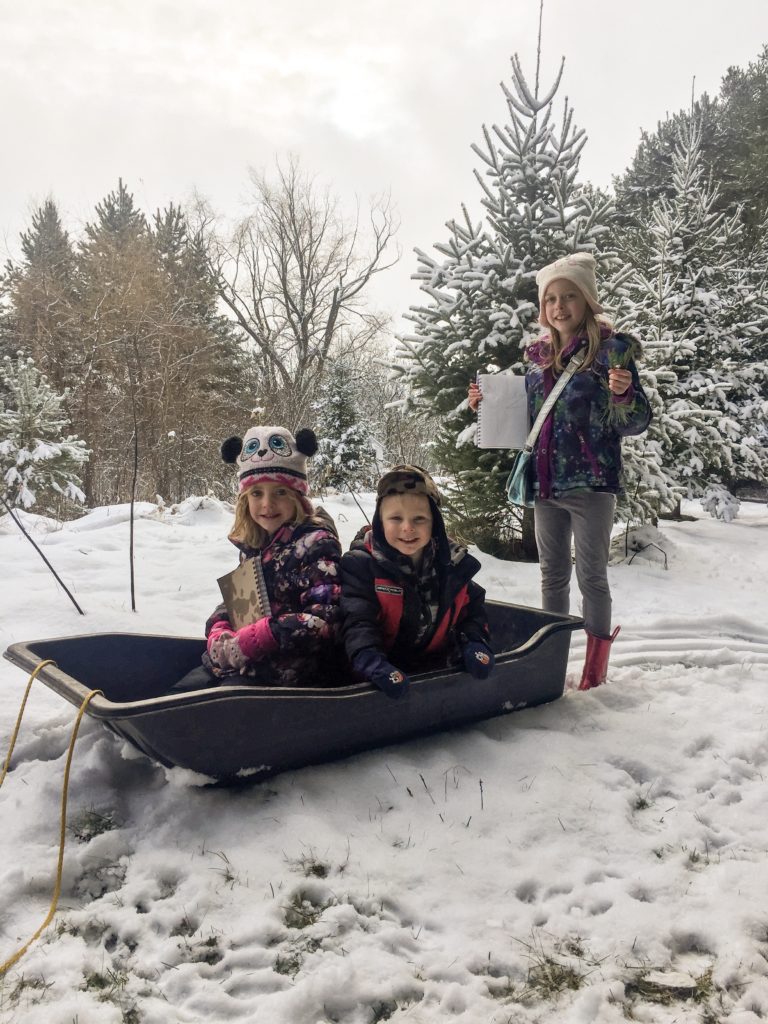
8) Go out in ALL seasons
There are days/weeks when you won’t want to go outside and study nature. Winter is often that time for me. However, once we are outside, it is oftentimes my favorite season to observe animal tracks, look for small animal holes, and listen to the birds. Making yourself get out there is often the hardest part. Once you get out there you will be rewarded with fresh air, a renewed spirit, and hopefully tired children.
9) Drop those expectations
This is the biggest mistake a parent can make! I know! I have done it time and time again! I want to see my kids studying exactly what I want them to study. I want them to be drawing our chosen theme in their Nature Journals. I want (and expect) picture-perfect nature study. Do you see how each of these phrases begins with “I want?” But, when you are outside with your children, what you want does not happen.
As I look back now, I can see that those desires were my own, not my children’s. Let them look at toads even when you were studying ants. That is when TRUE learning happens. Don’t miss number 10 below for some hope on keeping your nature study theme.
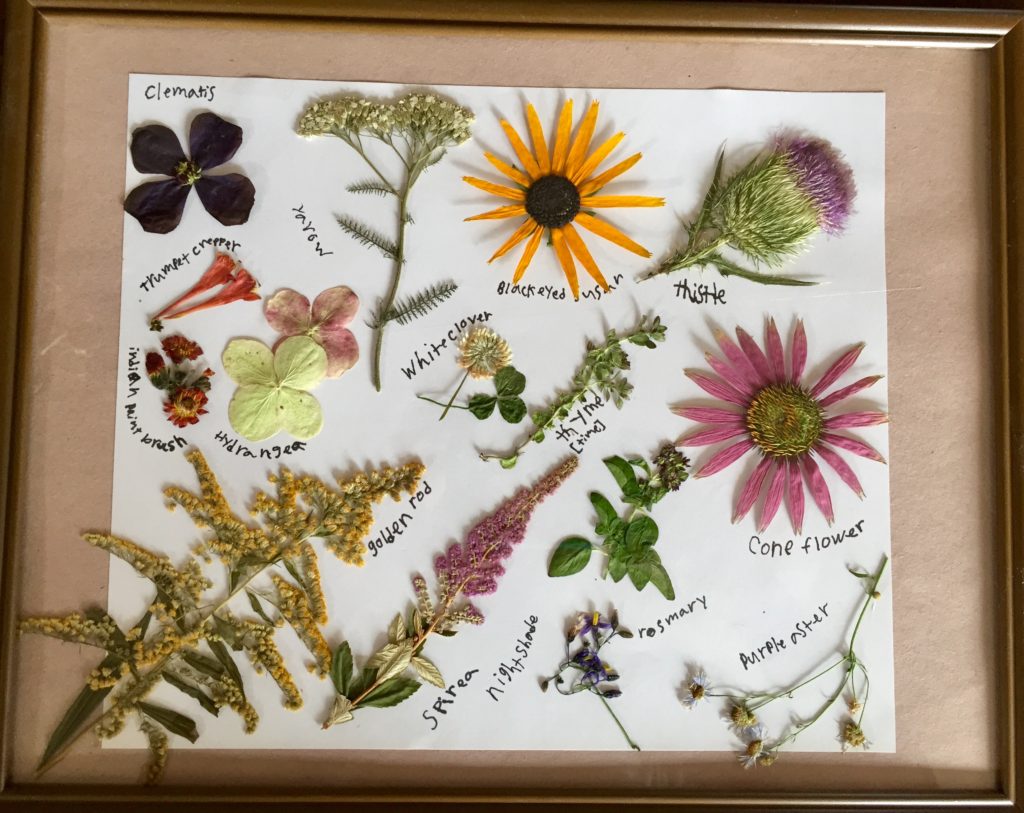
10) Bring it inside
I have found that sometimes my kids may not want to observe leaves (or whatever you may want them to study at the time) when they are outside. They want to explore on their own. Instead, I have them collect them and put them into their bags or a plastic grocery bag. Once we are done with the nature outing, we bring in our findings and put them in a basket on the table. My kids now have more time to look at the leaves and notice things. This is often when we do more nature journaling. You can keep these special findings on your table for the day, week, or month.
A nature table or basket is a fun addition to any home. I think nature makes the BEST centerpiece for your table! A bouquet of dandelions, a basket of pinecones, an assortment of fall leaves spread about. You can’t get more hygge than that!
Get creative and use those pine bows to paint a masterpiece. Press your wildflowers and make a beautiful picture with them. We made the above picture by pressing our flowers in the microwave between firebricks. I followed THIS tutorial. We proudly showcase these flowers in our home. You can also Preserve your fall leaves in beeswax to make a leaf garland or Leaf Crowns and Scepters. Do not take anything illegal but have fun.
11) Buy the kit
There is no shame in this! Sometimes you cannot find your own butterfly larvae. This past year was the first time our family has ever found chrysalis in the wild. You can purchase several insect kits to bring nature into your home. The Ant Mountain kit is a fun thing to do in the wintertime. You can watch how hand-working those ants are and not feel bad because they should not be released in the wild. I think these kits below are AMAZING. Bring those butterflies right into your home via the mail.
Lady Bug Land
Butterfly Garden
Ant Mountain
Grow ‘n Glow Terrarium
Root-Vue Farm
Owl Pellet Kit
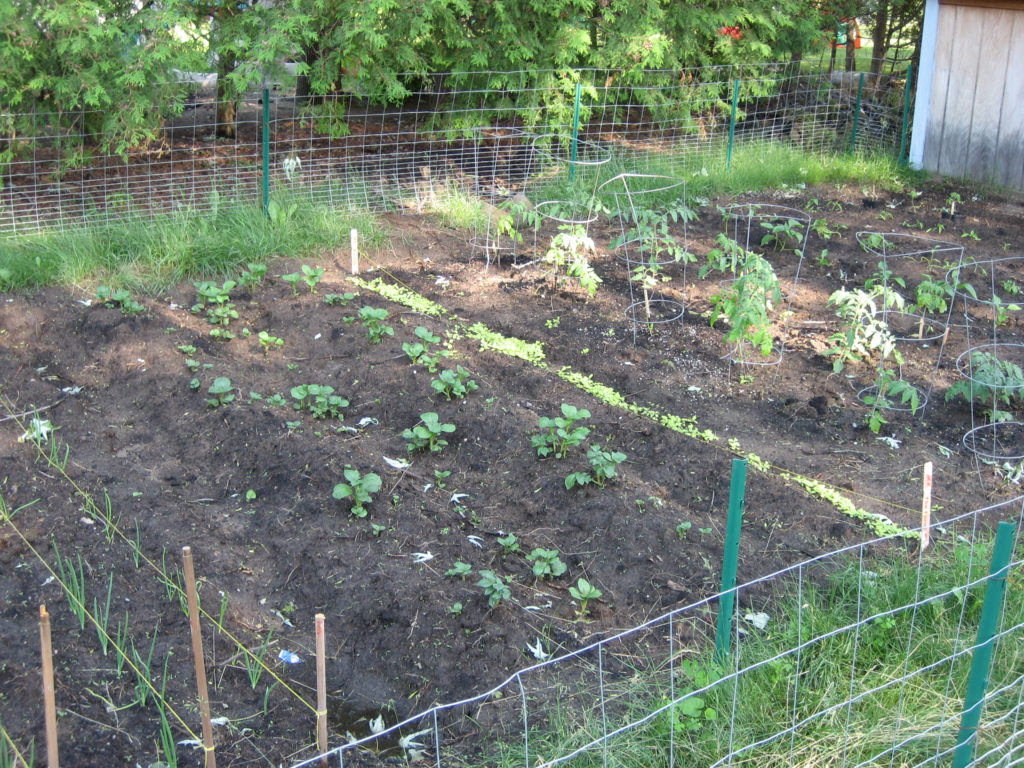
12) Grow a Garden
Growing a garden is a wonderful opportunity for kids to see how plants grow, the work that needs to happen to keep that plant growing, and the reward of getting the prize in the end. Gardening is possible in all households. Put some herbs in a window, have a patio garden, or if you have space, let your kids have a garden of their own. Beware… you may be raising a homesteader. I planted my very own garden at the age of 12. Thank you, Dad, for helping me live out that dream! I had the best zucchini!
Get Outside and Have Fun
No matter where you are in your nature study exploration, THE MOST IMPORTANT PART IS GETTING OUTSIDE! That’s it! Get them outside and they will explore, learn, and discover. Don’t worry about those picture-perfect moments. Don’t worry about all the extras. They are exactly what I said, “extras.” Be an active participant in learning about nature with your family and you are sure to have nature study success!
Pin me!
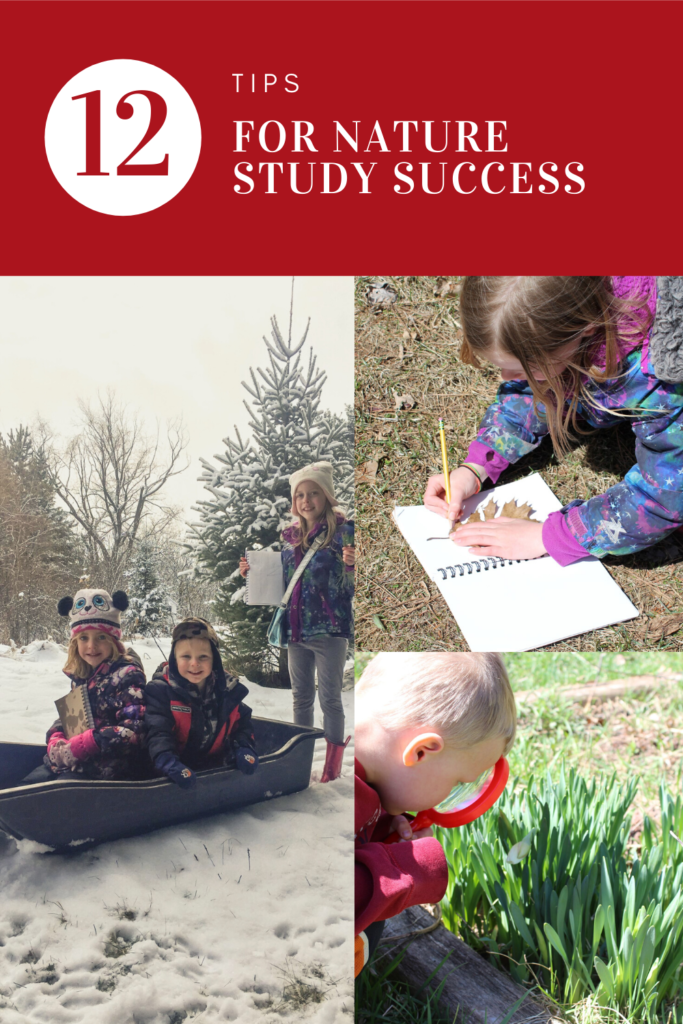
Did I miss any of your favorite Nature Books or Nature Activities? Please add your favorites below.
If you liked this post, you may also enjoy Books & Art: Miss Rumphius and an Easy Lupine Art Project or How to Preserve Fall Leaves in Beeswax.
-Lindsay

Our family LOVES the KiwiCo Subscription boxes! This is an easy way to add in STEM Education.
Click below to check out the different boxes.

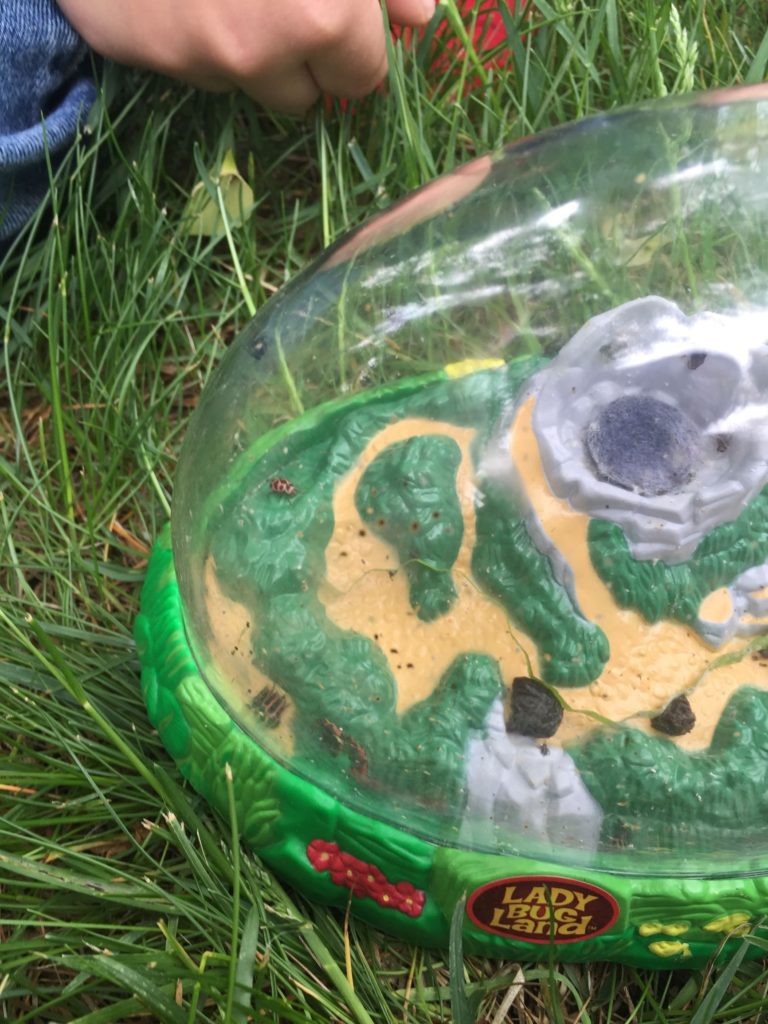
8 thoughts on “12 Tips for Nature Study Success!”
This is such a great resource of excellent ideas and suggestions. Getting outside with the kids is always a great idea!
Thank you, Karen! Fresh air always makes us feel better.
What great (and fun and educational!) tips. I love that you suggest going out in all seasons — always so much to see anytime of year — and grow a garden. It might take a little time, but seeing what your work can do is so awesome!
Thank you, Patricia. I agree with your garden comment! SO much to be learned from gardening with your kids.
these are great tips, i’ll forward to my homeschool friends!
Thank you, Jasmine! I appreciate that!
This was so helpful. I grew up on a farm so nature study was just a part of life. Now that I have my own littles, we live in town and I have struggled with how to make nature study a part of our life without having a farm to explore. You gave me some great ideas on where to start. Thank you!
I am so happy that you found this helpful Amber! The great thing about kids is that they find amazement in the simplest of things. An icicle handing down, the bird searching for worms, etc. I am sure you will find amazing things in town just by getting outside and exploring.